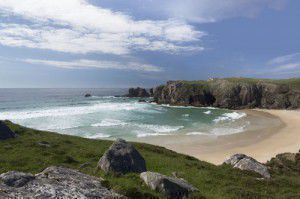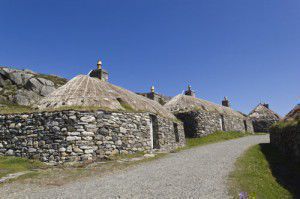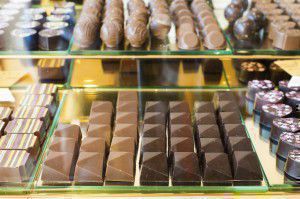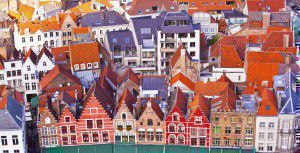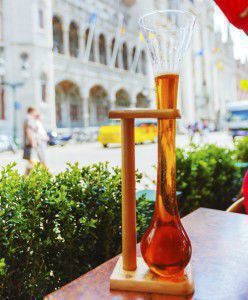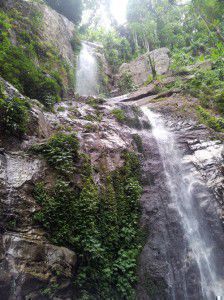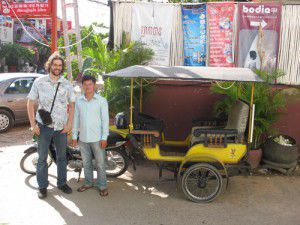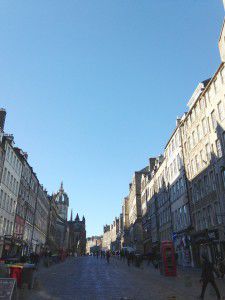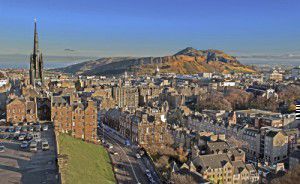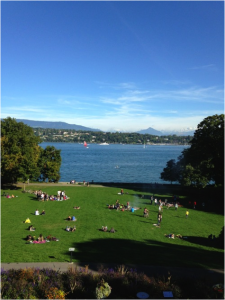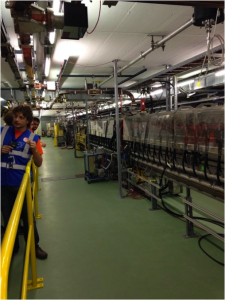10 reasons to visit… the Outer Hebrides
The scattered islands of the Outer Hebrides, off the Western coast of Scotland, are a haven of beauty, wildlife and mysterious archaeology. Tying in with last week’s Scottish Week here at EuroTalk, these are my top ten reasons to visit the islands, where Scottish Gaelic is still spoken as a native language.
We’d love to hear from residents or fans of this gorgeous part of the world – send us your tips!
1. The beautiful, beautiful scenery
Everybody, without exception, is blown away by the views on the Hebrides, where beaches are bright white and stretch out against a distant, uninterrupted horizon. The air is crisp and unpolluted and the seas, ever changing, create a dramatic backdrop to island life. Go driving and you might be the only person on the wide road for miles. Each of the islands has its own distinct geographical characteristics, from Lewis’ flatness to Harris’ mountains.
2. Black pudding
A local delicacy you’ll hopefully be presented with early on in your trip, Stornoway Black Pudding is now famous the world over. After a couple of slabs of it on your breakfast plate, you’ll not go hungry for the day, and if you’re feeling especially indulgent you might even round the meal off with a couple of kippers smoked in one of the island’s smokehouses. Yum!
3. Harris Tweed
Now internationally famous and found on Nike shoes, the tweed is traditionally made to protect against the extreme weather to be found on the island. It’s well worth taking a visit to one of the workshops or outlets to find out how it has been handmade by locals for centuries, up to the present day.
4. St Kilda
Admittedly, this is not a trip for the faint-hearted, as St Kilda lies a good eight hours’ travel by charter boat from the Hebrides, more from the mainland. Still, if you have time to play with, St Kilda is a fascinating trip. Its story of evacuation in the 1930s, after a period of extreme poverty and starvation, really hits home if you visit the museum, located in the homes of the original residents. The island is also a National Nature Reserve and a likely place to spot interesting flora and fauna.
5. The Blackhouse
You’ll find these in both the Highlands and Hebrides, and if you fancy you can even stay in one in the village of Gearrannan on Lewis, where the blackhouses have become visitor accommodation and you can experience for yourself the cosy, warm, smokey atmosphere. The blackhouse is a traditional home for both people (in one half) and their livestock (in the other), with the peculiar distinction that there is no chimney: instead, the smoke from the central hearth builds up and eventually filters through the thatched roof, creating a smokey, peaty and very warming atmosphere within.
6. Going to a whisky distillery
You can’t really miss this one, and generally in Scotland you’ll have a lot of local distilleries to choose from. On Lewis, you can visit the relatively new Abhainn Dearg distillery (the most westerly one in Scotland) and practice that all-important Gaelic word – Sláinte!
7. Ferries and planes
Island hopping around the Hebrides gives you the chance to see first-hand the vast differences in scenery, and character, of the many different islands. The archipelago is connected by a network of ferries, which, if you have a car, are well worth booking in advance to avoid being stranded somewhere for days. There are also a number of miniature plane journeys to be made, including the shortest ever flight, from Westray to Papa Westray, which takes a mere 1 minute 14 seconds. Don’t be alarmed if your plane only seats up to 8 people or if it lands, a little surprisingly, on the beach, as it does on Barra.
8. Rain
It’s probably a bit optimistic to expect perfect sunshine, even in the summer months, but luckily the Outer Hebrides look majestic in rain, and there is something deeply dramatic about the sudden and extreme downpour, swooping in within minutes, which can drench you to the skin. Nothing to worry about if you’re staying in the blackhouse and get to dry off in front of a peat fire, of course!
9. Wildlife
Undoubtedly this is one of the main reasons many people visit the islands. From the puffin to the golden eagle to the Minke whale, the islands, with their stunning natural beauty, are host to a rich variety of creatures which elsewhere are rarely seen.
10. Archaeology
Ranging from the very famous to the barely explored, the Hebrides are full of archaeological wonders from all ages. Perhaps the most well visited are the Callanish Stones on Lewis’ Western coast, which local legend (as often happens with standing stones) attributes to a group of naughty local giants turned to stone as punishment. Legends aside, the stones are enormous and imposing, and especially chilling if you manage to avoid the crowds and view them, early in the cold morning, huddled conspiratorially across the horizon.
Have we convinced you to give the Outer Hebrides a try? Don’t forget to learn a few words in Scottish Gaelic before you go…
Nat
10 reasons to visit… Bruges
Have you ever visited a city that managed to change your mind?
I visited Bruges earlier this year. Unfortunately, I’d accidentally timed my visit to coincide with the enthusiastically named ‘Amateur Arts Festival’, and consequently spent Saturday night with tissues rammed in my ears and arms clenching pillows to my head, as my hotel room shook with the relentless noise of amateur bass. I thought then that the chances of coming up with ten reasons to visit Bruges were pretty slim. Yet on Sunday morning, with the loudspeakers in the square finally silenced and the sun out, I became enchanted with this town that everyone always refers to as a peaceful haven of canals. These are the things which managed to turn my opinion around in the space of just one morning.
1. Trains
I get a bit excited about foreign trains, I know, but going to Bruges presented me with a new wonder: the double decker train. True, this is not localised to Bruges alone but most of the IC trains from Bruxelles seemed to be two storeys high, giving a fantastic view of the very flat countryside (and occasional windmill!) from the top deck. The trains are smooth and cool, and the conductors wear an amusing flat cap as part of their uniform. If you’re just planning a short visit to Bruges, you can get the Eurostar to Brussels and travel on from there (it’s about an hour on the fast train, two hours on the slow train).
2. Canals and boat trips
I wouldn’t say the town is riddled with canals in the same way Venice or Amsterdam are, but they linger in the backstreets and circle the centre so that you stumble across them when you wander off the main street. Surprisingly, there didn’t seem to be any locals drifting around on pleasure boats, although there were a few promising houses whose main doors seemed to lead out directly onto the canal. Activity on the waterways instead seemed to be wholly dominated by the tour boats, taking cargoes of visitors on half hour drives up and down the canal, streaming off fluent speeches in three languages as they went. If you’re only there for a short time, I’d advise a boat trip to get your bearings on the town, and to see some impressive buildings from otherwise undiscovered angles.
3. Chocolate
Belgium is world-famous for chocolate and there are lots of chances to sample it in Bruges. Having been there just after Easter, lots of independent chocolate shops were still displaying elaborate chocolate rabbits and chicken-shaped Easter eggs, as well as the usual array of picturesque truffles and pralines. It being the weekend, there didn’t seem to be anyone around making the chocolates, which was a pity, but I imagine that in the week you’d get a good look at the chocolatiers at work. I was particularly impressed with a small boutique called Stef’s, which sold chocolate tools dusted with cocoa to make them look rusty – I was entirely taken in until I decided it was highly unlikely that a food shop would fill its window with rusty tools.
4. Walking
Bruges, although it also has lots of famous sights, is perfect for the lazier tourist who just wants to meander and drink in the tranquil beauty. Cobbled streets with broad flat pavements and gentle bridges over canals provide a little haven to lose yourself in, and since the whole town is very small you soon enough stumble upon some familiar street or building to set you back on route. Horse drawn carriages trot past every so often, carrying bands of eager-eyed tourists, A particularly pretty walk turned out to be the wide promenade from the station into town (a very short stroll and definitely not worth getting the bus unless you have heavy luggage), which passes a beautiful pink-flowered war memorial and glides into the centre of town and some pretty little cafés.
5. Houses and architecture
The typical Flemish façade presides here, and people seem to take enormous pride in their property, keeping every gate neatly painted and every tile in place. With a maximum height of 30m for any building in the city, the scenery is all low-lying and the views from any high points are panoramic. Some interesting and very modern architecture brings a new sense of style to the traditional steep-roofed old houses.
6. Brewery
At one point home to over 50 breweries, Bruges now has only one active one, De Halve Maan brewery, which runs daily tours around its compact factory in the heart of the city. The tour, in Dutch, French and English, is definitely worth going on as it is stuffed full of information and lots of insights into why beer is healthy (an argument I always like to hear). They’ll also tell you that back in the ’50s the breweries would do home deliveries – you just had to ring a bell for the cart to stop and dispense beer to you directly. I imagine it’s no longer feasible to re-introduce this practice, but we can always dream… Having climbed right to the top of the factory and experienced the lovely view, you are released at ground level to claim your free beer in the spacious bar-restaurant, where one beer can easily turn into a happy afternoon sampling all the brewery’s many offerings.
7. Bike pumps
I’ve seen these around a little more recently – the free foot-operated bicycle pump – and I’m always impressed with a town that spends its money on something as practical and helpful as this.
8. Coffee…
and cake. This doesn’t need much explanation really: in Bruges, you can sit at a table on a cobbled pavement outside a bakery with exquisitely executed cakes and sip a small cup of intense black coffee. Although waffles seem to be the thing to have in Belgium, my favourite snack is the florentine – not a native Belgian sweet but nonetheless available in every cake shop.
9. Beers and beer glasses
Almost as attractive as the idea of sitting in a bar all day trying all the different beers is the idea of trying out all the different glasses. That may sound geeky but there are some really fun ones, including the absurd Kwak beer glass whose bulbous end makes it impossible to put down without the proper stand, and the La Corne drinking horn (which you can clink with a fellow Viking over a drinking toast and which, again, cannot be propped up except with the stand it comes served in). Good bartenders, the Belgians will tell you, will never serve a beer in the wrong glass, and each beer has its own glass, most of which are shaped like a chalice or a tulip.
10. Shopping
If this is what you’re after, you won’t be disappointed in Bruges. With a long, meandering high street full of clothes and chocolate shops, as well as a large market and side streets offering endless souvenirs, you could spend a day just in the shops. And if you’re looking for a bigger centre, Brussels is only an hour or so away by train, and Ghent is neatly stuffed in between the two, to make a weekend of it.
Have you been to Bruges? What were your highlights?
Nat
10 reasons to visit… Thailand
Jakub was a junior developer at EuroTalk until recently, and last month he spent a few weeks in Thailand, so we asked him for his tips on what to see and experience in this amazing country. Here are Jakub’s ten reasons to visit Thailand… and if you’ve got anything to add, please write us a comment at the bottom of this post, or tweet us @EuroTalk.
1. Food
Thai food is my personal favourite out of Asian cuisine. A food lover (especially carnivorous) will find himself in a gastronomical paradise once he sets his foot on this land. There are BBQ’d meat stalls every 50-100 metres which offer chicken, pork or liver on a skewer for 10 bahts. The equivalent of 18p. How cool is that. Apart from this you can come across stalls offering rottee (Asian version of pancakes), different kinds of sausages, soups, curries and the all-time classic – pad thai. And if you’re brave enough you can have some deep fried crickets, cockroaches, scorpions and snakes. All made from juicy meat, intense spices and fresh vegetables for less than a quarter of the average UK price.
2. Stunning views
Once you got your plate full of Thai deliciousness you would like to sit down and relax. No worries, dear traveller! You can enjoy gorgeous mountain views in the north (i.e. Doi Suthep near Chiang Mai) or chill out by the beach side in the south (i.e. Ao Nang) or even two combined on one of many islands (such as Koh Tao). Even the cities themselves can offer unique street panoramas (Chiang Mai’s old city).
3. Scuba diving
Thailand is one of the best places on Earth to admire the underwater world. Loved the ocean exploration programmes on travel channels? Well, now you can see everything with your own eyes and within reach of your hand, floating around just like an astronaut in outer space. And it feels like a different world.
4. Moon Parties
Koh Phangan, an island in the south of Thailand, is the host of one of the biggest parties in the country. The biggest one is the Full Moon Party, where you can dance to club music on a beach until sunrise, drinking the famous buckets, and get your body painted with UV reflective paint. Want to go to the jungle? Sure thing! Just keep your eyes peeled and look for the next Half Moon Party, where you can also enjoy dance music topped with fire shows and chilling out on hammocks. There are also less crowded, but still popular Red Moon Parties, Blue Moon Parties, Boat Parties. This island never goes to sleep.
5. Riding a scooter
Scooters and motorcycles play a big part in Asian everyday life – having a scooter is as essential as having a fridge or a washing machine. On top of that you can watch things unseen in Europe, like driving without helmet and shirt, 4-5 people on one scooter, ladies sitting sideways or even dogs balancing in the back! Scooter rental is very popular and, in my opinion, the first thing you should do when coming to a new town. Renting a scooter for a day costs as much as two taxi rides. Beware though – if you haven’t ridden a motorcycle previously, especially in dense traffic, Thailand is not a good place to learn how to drive, even if some rental places will let you without previous experience.
6. Climbing
Krabi is known for its gigantic limestone walls and for that reason it is the Thai capital of rock climbing. Even if you haven’t done this before, don’t worry – there’s a dozen climbing centres offering taster and training sessions. And if you want to spice up your climbs, why not try deep water soloing? If you fall off a wall, you take a dip in the sea and start all over again!
7. Long tail boat ride
Thais know what real recycling is. Apart from the bright, eye-catching colours of their boats there’s one element that stands out – a massive engine taken out from a car and installed on a hinge with a propeller attached to it. You can ask just for a cruise to see magnificent rocks sticking out of the sea or visit a tiny remote island and feel like Robinson Crusoe.
8. Tuk tuk rides
Although tuk tuk drivers will charge you twice or three times as much as a regular taxi, it’s worth the money as a one-off experience. Tuk tuks differ between towns, and the most colourful and distinctive are in Bangkok – motorcycle front with integrated rickshaw-like back is quite comfortable (provided you’re not a 6″3′ bloke) and, if you’re lucky and tip the driver, you might see some wicked tricks on the road (not for the faint-hearted).
9. Thai massage
Yes, I know it sounds cliché, but come on, it’s like being in England and not drinking English tea. One hour-long session and you’ll discover muscles in your body you’ve never used, leaving you crawling out of the place pleasantly relaxed. One thing to bear in mind is to go to such a place during the day with workers wearing uniforms, not by night to a dodgy place with ladies in dresses and high heels.
10. Everything’s cheap
All the things mentioned above have one huge advantage: they’re incredibly cheap. Piles of food for less than 3 pounds, hiring a scooter for as much as a single underground fare, night in a single room for 4 pounds, beer in a bar for a quid and the list goes on. The only real cost is the plane ticket and the rest – you could easily have a month’s trip with a 500 pounds budget. And it’s totally worth it.
Jakub
Thinking of following in Jakub’s footsteps? He found that away from the main tourist areas, knowing a little bit of Thai was really useful. So before you jump on a plane, remember to download uTalk or check out one of our other Thai programs.
10 reasons to visit… Edinburgh
I’m just about to go back to Edinburgh for my final year of university after having spent some time away from the city. I am determined to tick all of the touristy attractions off the list that make the ‘burgh a worthwhile destination, because it’s so true that when you live somewhere you don’t necessarily take advantage of the opportunities for adventure around you. Here are 10 must-sees that I have managed to experience – I wonder how much the list will have changed by this time next year!
1. Edinburgh Fringe Festival
Each year, around August time, a transformation takes over the city: almost every shop, every bar, every open space is descended on by the Fringe Festival: the biggest arts festival in the world. The first time I went I genuinely couldn’t believe the change that had come over the place I’d been living in for almost a year. There are people everywhere showcasing what they do and love best, whether that is interpretive dance or black comedy, street performance or orchestral ensembles. Some shows are free, others need to be booked far in advance, but I encourage you to go for something off the wall – with so much on offer, a disastrous morning performance can be forgotten with an incredible afternoon show!
2. The Royal Mile
This stretch of road runs from the iconic Scottish battlement that is Edinburgh Castle, to the Palace of Holyroodhouse, the official residence of the British monarch in Scotland. Both of these are highly recommended as places to visit, although I’ve not been to the Castle yet, as part of a university superstition. The Mile itself is flanked by terraces and shops, as well as street vendors and tours offering to show the horrible histories of the Windy City. There are also some great secret passages and alleyways that lead down to Princes Street via the Princes Street Gardens.
3. The National Museum of Scotland
Taking up almost the entirety of Chambers Street, including a controversial extension that holds the Museum of Scotland exhibits, The National Museum has a huge collection of artefacts from across the centuries. Although there are some temporary exhibitions that you have to pay for, you are free to roam around the majority of the museum. My personal favourite is the animal installation that spans three floors.
4. The Grassmarket/the Cowgate
Edinburgh is built on many different levels, and you can be forgiven for getting lost and confused with the topography of the city. Just down from the Royal Mile, the Grassmarket and the Cowgate are ideal locations for a good bite to eat and a drink (or two). There are quirky shops to be found cheek by jowl with hostels and cafés, as well as a few clubs if that’s what you’re looking for.
5. Arthur’s Seat
It’s not a hike, but an energetic walk, and the spectacular view from Arthur’s Seat to the hills, across the sea and out over to Fife is a definite must. It’s a perfect opportunity to take in the whole city, and get to grips with the wind!
6 – 8. Stockbridge
(6) Stockbridge Market on a Sunday is adorable: local produce, friendly people and all sorts of delectable goodies. There are also some lovely cafés in the area.
(7) If you’re in Stockbridge anyway, take a walk along the Water of Leith, which leads from Pentland Hills to the Forth of Firth at Leith. I’m not suggesting you tackle all 24 miles, but it makes for a different view of the city and a retreat from the hustle and bustle of the centre.
(8) The Royal Botanical Garden was founded in the 17th century, and continues to educate and explore to world-renowned status. It comprises four gardens and boasts an impressive collection of plants.
9. The Zoo
Now I’m not sure if you’ve heard, but they’ve got pandas. As well as these adorable, rare creatures, the zoo boasts the UK’s only koalas and an impressive ‘Discovery & Learning’ program for kids. If you can organise your trip for the right time, the Penguin Parade is a site for sore eyes, and other talks throughout the day are fascinating. The zoo is easily reachable by bus from Waverly Train station.
10. The Meadows
The University of Edinburgh area around Bristo Square and George Square backs onto The Meadows and further over to Bruntsfield Links. It’s a lovely spot for a little picnic or afternoon nap, and there’s sure to be people BBQ-ing too. Due to it being a student hub, you could also try out some of the lunchbox-sized lunch venues that won’t break the bank.
Have you visited Edinburgh? Share your own suggestions and tips in the comments for anyone planning a trip.
Lucy
PS Because this is a language blog, we felt we should add a footnote – English is the official language of Scotland, although it sounds a little different from the ‘Queen’s English’ spoken in much of England, particularly the south. Scotland also has two regional languages: Scottish Gaelic and Scots. You can learn Scottish Gaelic now with uTalk; watch this space for Scots!
10 reasons to visit… Geneva
When I tell people that I lived in Geneva for five months during my Erasmus year, most say ‘Geneva, yeah…I’ve been to the airport,’ and I have to confess that I was once amongst them. The city as far as I was concerned was a necessary stop on the way towards my most adored pastime (snowboarding), and little else. Although not high up on most students’ list of places to spend a considerable amount of time, due to its costliness and largely conservative culture, I managed to find a host of affordable enjoyments in which you can partake, if ever stuck on a flight transfer or, you know, you actually decide to visit.
Switzerland has three official languages – French, German and Italian. The language predominantly spoken in Geneva is French – don’t forget to learn a little before you go…
1. Lac Léman (pronounced “lemon” in a French-sounding accent)
A beautiful body of water 73km long that is flanked by the Jura mountains to the North and the Alps to the South. On a clear, crisp, winter’s day you can see the snowy summit of breath-taking Mont Blanc, which I can assure you, is the best cure for any heaviness of heart. If you buy a transport pass, it includes trips from one side to the other (at the narrower, city end) – just imagine if that were your daily commute! The lake is great for running around, swimming in and looking at from a variety of locations. Parks worth a visit along the banks are: ‘Mon Repos’ and the ‘Jardin Botanique’ on the Rive Gauche, or ‘La Grange’ on the Rive Droite.
2. Buvette des Bains des Pâquis, Quai du Mont Blanc
It is here that you can combine two of the most Swiss of pastimes: the eating of fondue, by a lake. Although the summer menu doesn’t offer this cheese and wine based delight, the atmosphere of the place is still something to enjoy. If you don’t fancy eating, you can also indulge in a Hammam or massage, or depending on how brave you’re feeling, jump straight in the lake. I went in in December, which I would highly recommend!
3. The ‘brocante’ at Plaine de Plainpalais
Every Wednesday and Saturday, and every first Sunday of the month, the Plaine de Plainpalais holds one of Switzerland’s largest flea markets. From old postcards to candelabras, fur coats to vintage skis, treasures abound. Food stalls selling many different international delights of various savoury and sweet description, and you could easily spend a whole morning trawling through the crates of CDs and photographs. Bargain brocante hunting!
4. The Palais de Nations
The UN offer tours in 15 different languages, through the hallways and into the conference rooms where the world’s wrongs are put to rights. The complex is centred around President Woodrow Wilson’s ‘League of Nations’ building from the 1920s, and the view out onto the lake is in itself pretty inspiring. All in all, a worthwhile experience.
5. International Red Cross and Crescent Museum
The Red Cross was founded in Geneva in 1863 with a view to offering support and relief to wounded soldiers. Since then, the organisation has grown to protect victims of international and domestic conflict. This museum was harrowing and heart-warming at the same time, with so many first-person sources, and an impressive interactive learning facility.
6. Proximity to ski resorts
Ok, arguably this isn’t a reason to visit Geneva, but it’s definitely something that’s great about the city. There are 23 resorts within an hour’s drive, making a weekend break in the mountains a perfectly viable option. If you’re wanting to go further afield, many companies run regular bus services from the airport, which is only a ten-minute efficiently-run Swiss train ride away from the centre.
7. Cathédrale St. Pierre
Situated on the hill of the beautiful old town of Geneva, this Cathedral has a spectacular panoramic view of the city and the mountains that lie beyond. The cathedral itself is an impressive structure, and inside lies the chair of Jean Calvin, one of the pivotal figures of the 16th century Protestant Reformation.
8. CERN
Whilst living in Geneva, I was lucky enough to attend a CERN open day and it thoroughly amazed and confused me. The European Centre for Nuclear Research is a complicated network of warehouses and research buildings that give the appearance of a large village, oh, and there’s a 27km underground Large Hadron Collider too. The visit was more science than I have learnt in my whole life, squished into an afternoon, and I left frazzled but fascinated!
9. Ice Hockey
I will confess that I was already an ice hockey fan before moving to Geneva, but watching Genève Servette play really entrenched my love for the sport. The atmosphere at a game is instantly electric because not only are the fans excited, but also cold, so everyone shouts and jumps right from the get go. The team are definitely worth watching too – this last season they made it to the semi-final of the Swiss National Championships where they had to play ZSC Lions seven times, and unfortunately lost out on a finals place only in the last game.
10. Carouge
This little market town, south of the city, is full of boutiques and hosts a variety of themed markets throughout the year. There are the regular stalls selling meat, cheese, fruit and veg, but it’s worth going at Christmas time to get a sense of the community. Another favourite was when I was there in October and they had a sheep-shearing demonstration and a petting zoo, complete with a show where a sheepdog herded some geese. #Switzerweird
Have you been to Geneva? Share your own reasons to visit in the comments – and remember, we’re always open to suggestions for new places to feature!
Lucy
